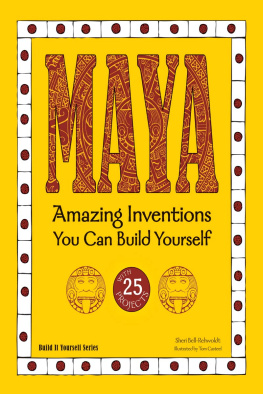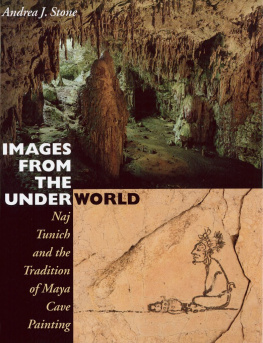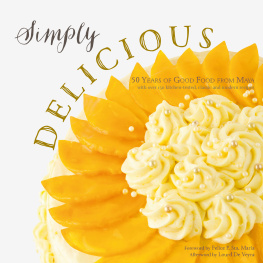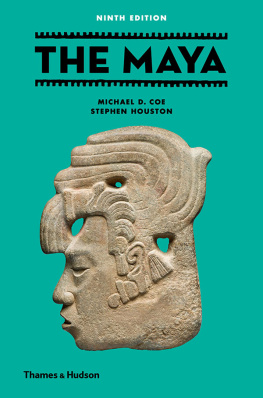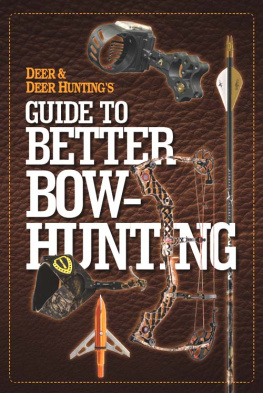THE LINDA SCHELE SERIES IN MAYA AND PRE-COLUMBIAN STUDIES
The Beast Between
DEER IN MAYA ART AND CULTURE
MATTHEW LOOPER

UNIVERSITY OF TEXAS PRESS
AUSTIN
Copyright 2019 by the University of Texas Press
All rights reserved
First edition, 2019
Requests for permission to reproduce material from this work should be sent to:
Permissions
University of Texas Press
P.O. Box 7819
Austin, TX 78713-7819
utpress.utexas.edu/rp-form
LIBRARY OF CONGRESS CATALOGING-IN-PUBLICATION DATA
Names: Looper, Matthew George, 1966, author.
Title: The beast between : deer in Maya art and culture / Matthew Looper.
Other titles: Linda Schele series in Maya and pre-Columbian studies.
Description: First edition. | Austin : University of Texas Press, 2019. | Series: The Linda Schele series in Maya and pre-Columbian studies | Includes bibliographical references and index.
Identifiers: lccn 2018034569
ISBN 978-1-4773-1805-8 (cloth : alk. paper)
ISBN 978-1-4773-1806-5 (library e-book)
ISBN 978-1-4773-1807-2 (nonlibrary e-book)
Subjects: LCSH: Maya art. | Deer in art. | Animals and civilization. | Human-animal relationships. | MayasAntiquities.
Classification: LCC F1435.3.A7 L66 2019 | DDC 972.81/01dc23
LC record available at https://lccn.loc.gov/2018034569
doi:10.7560/318058
CONTENTS
ACKNOWLEDGMENTS
THE IDEA FOR THIS BOOK germinated while I was conducting research on deer dances for my study of ancient Maya dance (Looper 2009). However, I realized that the dances are related to a number of themes that would be better treated in a separate monograph. This has permitted an exploration with a much broader perspective.
This study was supported by a fellowship from the National Endowment for the Humanities (FB-51444-05), the National Science Foundation (IBSS: 1328928), two summer fellowships from Dumbarton Oaks, Washington, DC, a Franklin Research Grant from the American Philosophical Society, and a research grant from the California State University Research Foundation. I am also grateful for the support of the Department of Art and Art History at California State University, Chico (Asa Mittman, chair) and the Art History Program, University of California, Davis (Talinn Grigor, chair) during the writing of this book. Any views, findings, conclusions, or recommendations expressed in this book do not necessarily reflect those of the National Endowment for the Humanities, the National Science Foundation, Dumbarton Oaks, the American Philosophical Society, the University of California, or the California State University.
I thank the following institutions and individuals for permission to study works of art and to publish the drawings and photographs included in this book: the Art Institute of Chicago; Corpus of Maya Hieroglyphic Inscriptions, Harvard University; Dallas Art Museum; Dumbarton Oaks; Instituto de Antropologa e Historia de Guatemala; Instituto Hondureo de Antropologa e Historia; Instituto Nacional de Antropologa e Historia de Mxico; Institute of Archaeology, Belize; Los Angeles County Museum of Art; and Peabody Museum, Harvard University; as well as Edwin Braakhuis, Linda Brown, Ed Carter, Michael Coe, James Garber, Ian Graham, Nicholas Hellmuth, Stephen Houston, Heather Hurst, Justin Kerr, Frank Lee Mays, Mary Miller, Dana Moot II, David Pendergast, Elizabeth Pope, Dorie Reents-Budet, David Schele, David Stuart, Karl Taube, Leticia Vargas (Proyecto Ek Balam, Centro INAH Yucatn), Alexander Voss, and Debra Walker. Many of these individuals as well as Krystyna Deuss, Virginia Fields, Judith Strupp Green, Donald Hales, Victoria Lyall, Martha Macri, David Mora-Marn, Matthew OBrien, Yuriy Polyukhovych, David Reed, Matthew Robb, Carolyn Tate, Gabrielle Vail, and Marc Zender provided helpful comments, assistance with images and materials, and much needed support along the way, for which I am grateful. I thank Emmett Blankenship for providing the white-tailed deer ulna illustrated in Guernsey, and an anonymous reviewer for their many helpful comments on drafts of the manuscript. Finally, I would like to thank several Maya informants in Guatemala, especially in Chajul, Santiago Atitln, and San Andrs Xecul, for information reported in the present study. Most of these interviews were conducted in 2006.
Introduction
The metaphysical role of animals in primal societies which shaped and defined our species is not just a vague reverence for animals but a body of procedure and narrative which acknowledges kinship and the necessity of killing, a sinew of sentience and spiritual power linking death and love.
SHEPARD 1993: 278279
IN THE EARLY COLONIAL KICHE Maya epic the Popol Vuh the Hero Twins discover that weeds and bushes overrun their maize field every night, even though they clear it daily. In order to ascertain the cause, they wait in the field and try to seize animals to interrogate them. First they try to catch the jaguar and puma, who elude them. They have better luck with the deer and rabbit, but their tails break off and the animals escape. Finally, they snare a rat, who tells them about their fathers ballgame equipment, which they later use in their battles against the lords of the underworld (Christenson 2003: 148150). In this story, the reference to catching the deer and rabbit seems to allude to the fact that these animals are commonly hunted in the Maya area (Christenson 2003: 150). But it has also been argued that the shortening of the tails of these two creatures reduces their animality and thereby humanizes them (Burkhart 1986: 110). According to this interpretation, both the rabbit and the deer embody the interface between animals and humans and between forest and human dwelling/garden. To employ the terminology of Edward Said (1978: 5455), deer are an important component of the imaginative geography that the Maya used to position themselves in contrast to nonhumans and conceptual others (see also Douglas 1975: 289).
Why would the Maya select deer to represent such a fundamental aspect of identity? Various scholars have attempted to explain the prominence of deer as a metaphor among Native American peoples. One theory holds that this lore is the legacy of the early colonization of the Americas by people crossing the Bering land bridge from Siberia (Cordy-Collins 2010; Furst 1976: 167173). According to these authors, the Eurasian settlers may have practiced a form of ecstatic religion (shamanism) in which reindeer were prominent. The descendants of these shamans, who still practice in Siberia, observe the ecological connections among the larch tree, its fly agaric mushroom (Amanita) symbiont, and the reindeer, which eats the mushroom. These three species are fundamental to Siberian religious symbolism, which employs the psychoactive potency of the fungus as the basis of religious experience.
The theory proposes that when colonists of Eurasian origin arrived in the tropical Americas they made species substitutions; in particular, native deer species symbolically replaced the reindeer. This is best illustrated with the Huichol of west Mexico, where the maraakme (shaman) gathers the peyote cactus (Lophophora williamsii) needed to induce religious trance visions. This is interpreted as a sacred deer hunt in which the maraakme shoots an arrow into the cactus. The plant is addressed as a deer, because the Huichol believe that the cactus grows where a deer has been ritually killed. Later, during the vision rite, the peyote is used to divine an auspicious day for inaugurating the deer hunt.
While documentation from the ancient Maya is insufficient to confirm this evolutionary hypothesis, it does provide ample evidence of this animals complex roles in ritual and religion as well as subsistence. The prominence of a game animal in Mesoamerica may seem surprising, given the importance of maize agriculture in the development of the civilizations within this culture area. Indeed, not only did the Maya rely heavily on maize for caloric intake, but this prime cultigen was widely venerated and even deified. The imagery and rites of the maize agricultural cycle pervaded aesthetics and ceremony for centuries.profound degree to which deer and humans were interdependent, which was interpreted culturally in terms of both predation and reciprocity.
Next page

